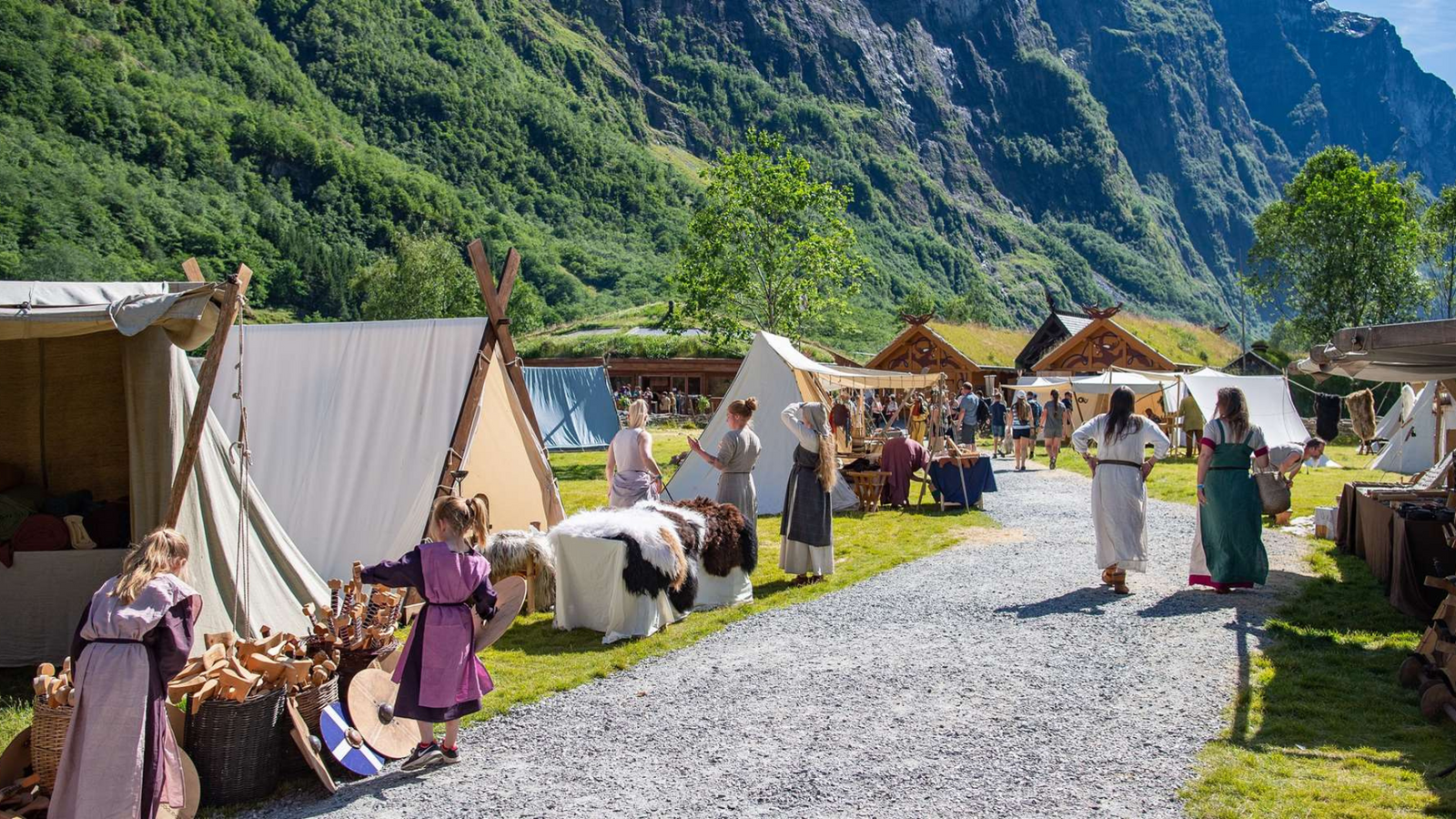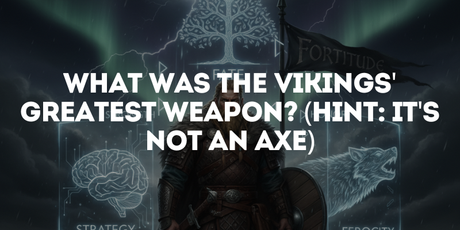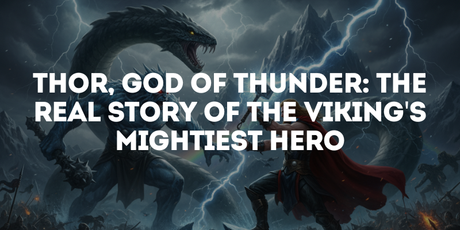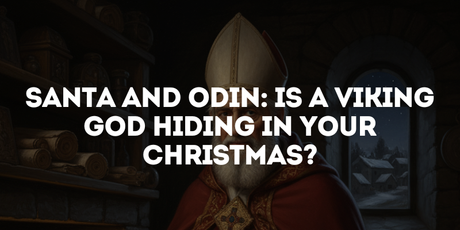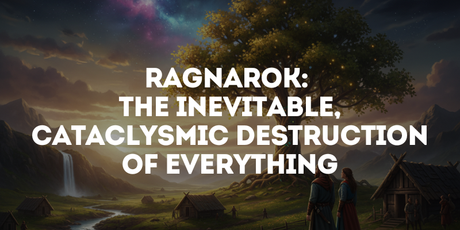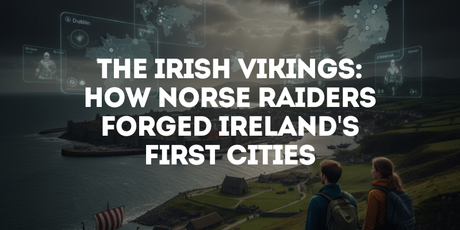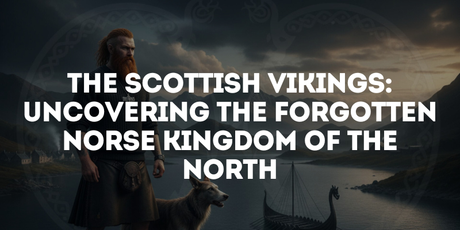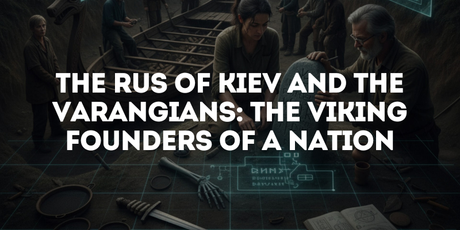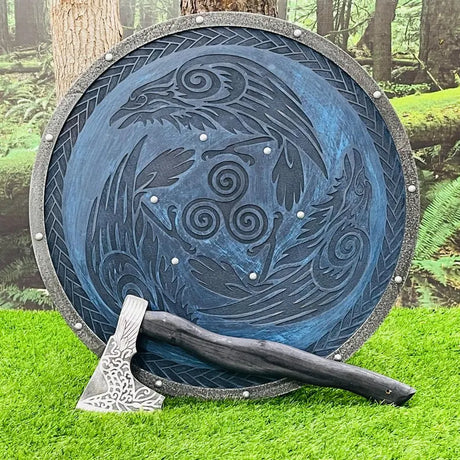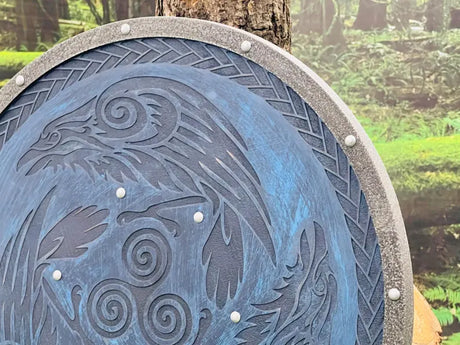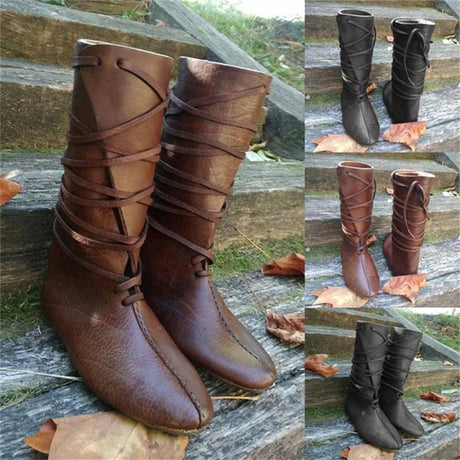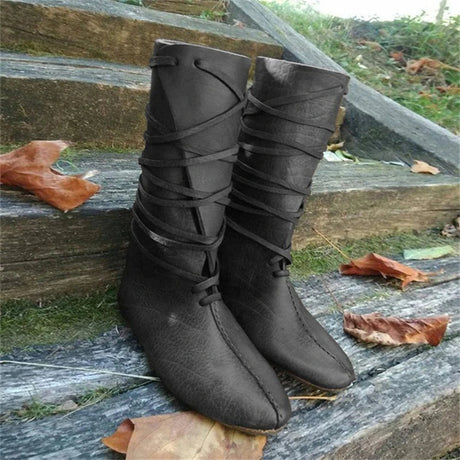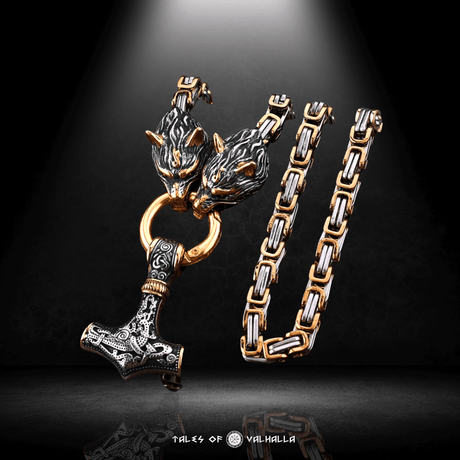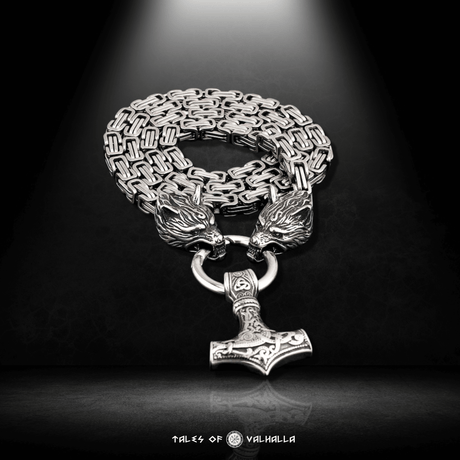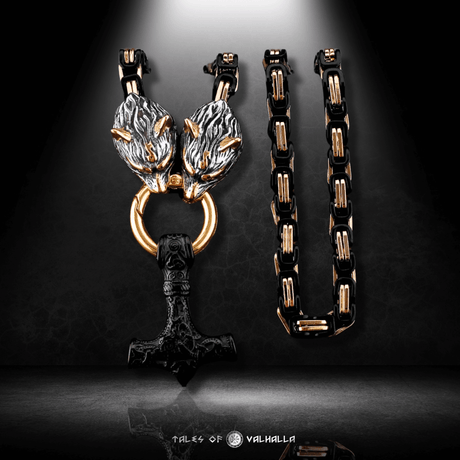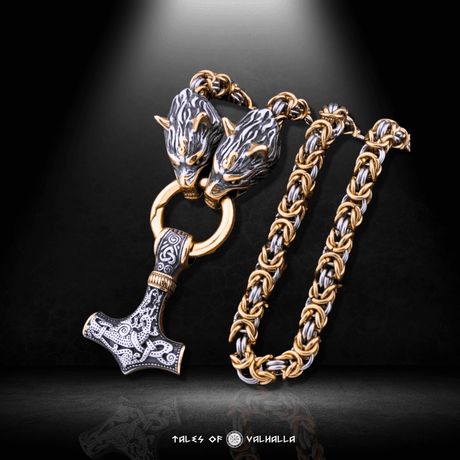The Viking Age, spanning from the late 8th to the 11th century, is a period steeped in both myth and history. While Vikings are often portrayed as fierce raiders and seafaring adventurers, the reality of their daily lives was far more complex and rich in culture. At the heart of Viking society were their villages, where families lived, worked, and worshiped together. These Viking villages were vibrant hubs of activity, deeply connected to nature, and sustained by the strong sense of community that characterized Norse life.
In modern times, Viking villages continue to captivate our imaginations. From reconstructions in Norway to Viking festivals in the United States, there are countless ways to experience the magic of Viking village culture. In this blog, we will explore everything you need to know about Viking villages, including what life was like in these settlements, where to visit reconstructed Viking towns, and how Viking heritage is being preserved and celebrated today.
Discovering Viking Village Life: The Backbone of Norse Society
What Was Life Like in a Viking Village?
To truly understand Viking culture, it's essential to look beyond the image of warriors on ships and explore the daily life of those who stayed behind. Viking villages were the foundation of Norse society, where the majority of people lived and worked, providing for their families and engaging in various trades.
Viking villages were typically small, with populations ranging from a few dozen to several hundred people. These villages were self-sufficient, with each family contributing to the community by farming, fishing, or working as skilled craftsmen. The location of a village was carefully chosen, often near rivers or coastlines to ensure access to water and the ability to trade with nearby settlements.
The Structure of a Viking Village
At the center of Viking village life was the longhouse, a large rectangular building made from timber, stone, or turf. Longhouses served as both homes and communal gathering spaces. Inside, families lived in close quarters, sharing meals, working together, and offering prayers to the gods. The longhouse was where the family hearth burned, providing warmth and light in the long, dark Scandinavian winters.
Surrounding the longhouses were smaller buildings such as barns, workshops, and storage sheds. These structures housed livestock, stored grain, and served as workspaces for blacksmiths, weavers, and other artisans. Unlike modern towns, Viking villages were spread out, with homes and buildings often spaced apart to allow for farming and livestock grazing.
The Communal Nature of Viking Villages
Life in a Viking village was inherently communal. While each family had its own home, the entire village often worked together to ensure survival. Seasonal festivals, religious ceremonies, and community feasts were common, bringing everyone together to celebrate the harvest or honor the gods. The concept of the Viking family extended beyond blood relatives; the village itself was like one large family, bonded by shared work, faith, and traditions.
In Viking society, even the warriors who went off on raids or trading expeditions were deeply tied to their villages. When they returned, they brought wealth and goods that were distributed among the community, reinforcing the strong sense of mutual support that characterized Viking life.
Viking Family Life: Roles and Responsibilities
The Role of Men in Viking Villages
Men in Viking villages had a wide range of responsibilities, from farming and fishing to blacksmithing and trading. Viking men were expected to provide for their families, either through agriculture or by going on trading expeditions or raids. While much of Viking life was focused on farming and daily sustenance, many men also trained in combat, ready to defend their village or join raids when necessary.
When men were not engaged in combat or exploration, they spent their days tending to crops, repairing tools, building structures, and participating in the village's political life. Historically accurate Viking depictions show men as versatile and resourceful, skilled in both domestic and martial pursuits.
The Role of Women in Viking Villages
Women in Viking villages played an equally important role, managing the household and often working alongside men in agriculture and trade. Viking women were skilled weavers, creating the textiles that clothed their families and sometimes producing goods for trade. Women also tended to livestock, cared for children, and oversaw the daily functioning of the home.
Despite the division of labor, Viking women were far from passive. Many historical accounts highlight the agency and influence women had within their communities. Some women even accompanied men on voyages, serving as traders, explorers, and, in some cases, warriors. The strength and resilience of Viking women have become iconic, reflected in modern portrayals of figures like Lagertha, the legendary shield-maiden.
Children in Viking Villages
Children in Viking villages were seen as valuable members of society and were expected to contribute from a young age. Boys would often assist their fathers in farming or craftsmanship, while girls would learn domestic skills from their mothers. Education was practical, with children learning through experience and imitation rather than formal schooling.
Storytelling played an essential role in passing down knowledge, and many Viking children grew up listening to tales of gods, heroes, and their ancestors' exploits. These stories helped instill values of bravery, loyalty, and respect for the gods.
The Spiritual Life of Viking Villages
Viking Religion and Worship
Viking villages were deeply spiritual places, with faith in the Norse gods woven into every aspect of daily life. The Vikings worshipped a pantheon of gods, each associated with different aspects of life. Odin, the all-father, was revered as the god of wisdom, war, and death, while Thor, the thunder god, was called upon for protection and strength. Freyja, the goddess of love and fertility, was also a central figure in Viking worship.
Prayers and sacrifices were a regular part of Viking life. Families would offer food, drink, or handmade objects to the gods, asking for good fortune, protection, or a bountiful harvest. These rituals often took place in sacred groves or near old Scandinavian maps that marked the location of holy sites. Larger villages sometimes had temples dedicated to the gods, where the entire community would gather for important festivals and religious ceremonies.
Viking Festivals and Celebrations
Throughout the year, Viking villages celebrated a variety of festivals that were closely tied to the seasons and the agricultural cycle. One of the most important celebrations was Yule, a winter festival that honored the sun's return after the darkest days of the year. Feasts, songs, and games were common during Yule, and families would gather around the hearth to share stories and give thanks to the gods.
Another significant celebration was Midsummer, which marked the longest day of the year and the height of the growing season. Viking villages would host feasts, light bonfires, and hold religious ceremonies to ensure the continued fertility of the land. These festivals not only strengthened the bonds between villagers but also reinforced their connection to the natural world and the divine.
Exploring Viking Villages Today: A Modern Journey into the Past
For those eager to experience the life of the Vikings firsthand, there are numerous historically accurate Viking villages that have been reconstructed across Scandinavia and beyond. These villages offer visitors the opportunity to step back in time and immerse themselves in the sights, sounds, and smells of Viking life.
Gudvangen Village: Norway’s Living Viking Village
One of the most famous and immersive Viking villages in the world is Gudvangen Village, located in the fjords of western Norway. Gudvangen is a "living" Viking village, where reenactors dressed in traditional Viking attire recreate daily life as it was over a thousand years ago. Visitors can explore the longhouses, watch artisans at work, and participate in Viking feasts, games, and rituals.
Gudvangen Village also hosts an annual Viking festival, drawing visitors and reenactors from around the world. During the festival, the village comes alive with combat demonstrations, storytelling, music, and traditional Viking crafts. For anyone interested in Viking culture, Gudvangen offers an unparalleled opportunity to experience Viking life up close.
Viking Village Vermont and Viking Village Guilford
For those in the United States, Viking Village Vermont and Viking Village Guilford are two popular destinations that bring Viking culture to life on American soil. These reenactment villages offer educational experiences that include craft demonstrations, combat reenactments, and Viking storytelling. Both locations host Viking festivals that feature traditional music, feasting, and opportunities for visitors to try their hand at Viking skills like archery and blacksmithing.
Viking Village Vermont, in particular, has become a hub for Viking enthusiasts, offering a unique blend of historical accuracy and interactive exhibits. Visitors can explore reconstructed longhouses, learn about Viking farming techniques, and even participate in hands-on workshops.
Preserving Viking Heritage: Museums and Artifacts
In addition to reconstructed villages, many Norwegian Viking museums and heritage sites are dedicated to preserving Viking history. These museums house a wealth of artifacts, including Viking ships, tools, weapons, and everyday household items, providing valuable insights into how Vikings lived, worked, and traveled.
The Viking Ship Museum in Oslo
The Viking Ship Museum in Oslo, Norway, is one of the most significant museums dedicated to Viking history. The museum is home to three well-preserved Viking ships, which were excavated from burial mounds along with numerous artifacts. Visitors can explore these ships up close, gaining a deeper understanding of Viking craftsmanship and seafaring abilities.
In addition to the ships, the museum features exhibits on Viking village life, showcasing tools, textiles, and jewelry. These artifacts provide a vivid picture of daily life in Viking villages, from farming and cooking to religious rituals and trade.
The Lofotr Viking Museum in the Lofoten Islands
Located in the beautiful Lofoten Islands, the Lofotr Viking Museum is another must-visit for Viking enthusiasts. This museum features a full-scale reconstruction of a Viking chieftain’s longhouse, complete with interactive exhibits that allow visitors to experience Viking life firsthand.
The museum also hosts an annual Viking festival, which brings together reenactors, musicians, and artisans to celebrate Viking culture. Visitors can enjoy Viking feasts, try their hand at archery, and watch traditional Viking games.
Tracing the Footsteps of Vikings: Key Viking Places to Visit
The Viking Age left a lasting legacy across Scandinavia and beyond, with Viking settlements, burial sites, and artifacts scattered across Europe and the North Atlantic. For those interested in exploring Viking places, there are several key locations that offer a glimpse into the world of the Vikings.
Iceland: A Land of Viking Settlers
Iceland, one of the last places to be settled by Vikings, is home to numerous Viking sites, including farmsteads, burial mounds, and natural landmarks that played a role in Viking sagas. The Settlement Exhibition in Reykjavik is a great starting point for visitors interested in Viking history, as it showcases the remains of one of the oldest Viking settlements in Iceland.
For those looking to explore further afield, the Saga Museum in Reykjavik offers a detailed look at Viking life through interactive exhibits and life-sized models of Viking figures. Iceland’s dramatic landscapes, from volcanic craters to rugged fjords, provide the perfect backdrop for tracing the footsteps of Viking explorers.
The Abandoned Viking Villages of Scandinavia
Throughout Scandinavia, there are numerous abandoned Viking villages and archaeological sites that offer insights into Viking life. Some of these villages were abandoned due to changes in climate, trade routes, or conflict, but their remains still provide valuable information about how Vikings lived and interacted with their environment.
For example, the Viking village at Borg, Norway, is one of the most well-preserved Viking sites, with a reconstructed longhouse and museum that offer a detailed look at Viking farming and domestic life. Similarly, the village of Jelling in Denmark is home to the famous Jelling Stones, which are considered some of the most important Viking artifacts.
Conclusion
Exploring Viking villages offers a unique opportunity to step into the world of the Vikings and experience their daily lives, traditions, and values. Whether you’re visiting Gudvangen Village in Norway, attending a Viking festival in the United States, or exploring ancient Viking sites across Scandinavia, these experiences provide a window into a rich and vibrant culture.
From the craftsmanship of Viking blacksmiths to the communal spirit of Viking families, the legacy of Viking villages continues to inspire and captivate us. By immersing yourself in Viking village culture, you can gain a deeper appreciation for the people who built these settlements, sailed the seas, and left an indelible mark on history.
FAQ
1. What were Viking villages like?
Viking villages were small, self-sufficient communities where families lived and worked together. They typically featured longhouses, barns, workshops, and communal areas for gatherings. These villages were often located near natural resources like water, forests, and fertile land.
2. Where can I visit a Viking village today?
You can visit reconstructed Viking villages in places like Gudvangen Village in Norway, as well as Viking Village Vermont and Viking Village Guilford in the United States. These villages offer immersive experiences that showcase Viking crafts, traditions, and daily life.
3. How did Vikings live in their villages?
Vikings lived in longhouses with their families, working as farmers, blacksmiths, and traders. Life in a Viking village was communal, with families often sharing resources and participating in festivals and religious rituals together.
4. Are there any Viking museums worth visiting?
Yes, museums like the Viking Ship Museum in Oslo and the Lofotr Viking Museum in Norway offer incredible insights into Viking history, with exhibits on Viking ships, tools, weapons, and village life.
5. What can I do at a Viking reenactment village?
At Viking reenactment villages like Gudvangen Village, you can explore longhouses, watch traditional crafts like blacksmithing and weaving, participate in feasts and games, and witness Viking combat demonstrations.
6. Why were some Viking villages abandoned?
Viking villages were sometimes abandoned due to changes in climate, trade routes, or conflict. These abandoned villages provide valuable archaeological insights into Viking life and expansion.

